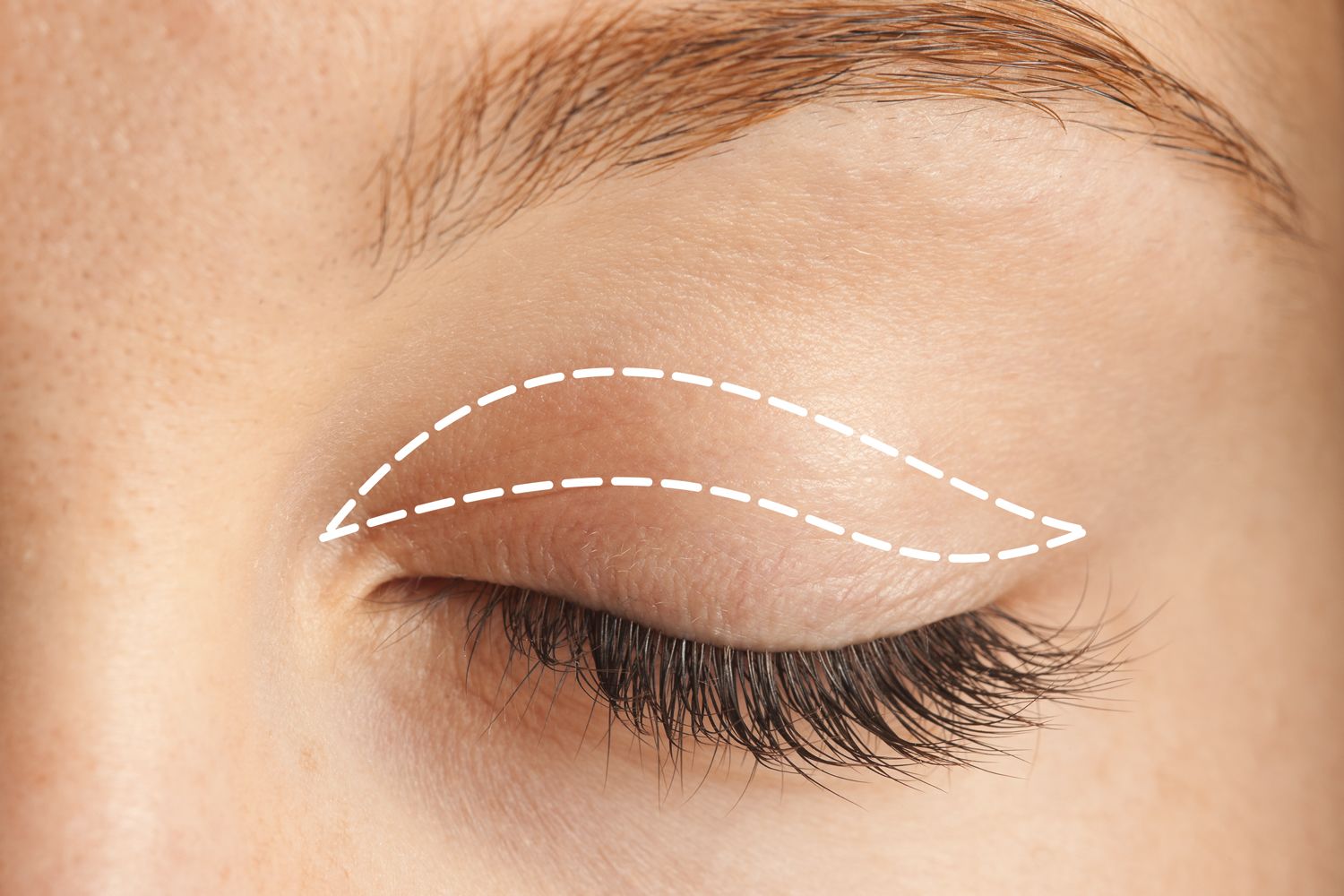
This page will give you information about a blepharoplasty. If you have any questions, you should ask your GP or other relevant health professional.
What is a blepharoplasty?
A blepharoplasty is an operation to remove excess skin and fat from your eyelids and to tighten your skin and soft tissues around your eyes.
Is a blepharoplasty suitable for me?
As you get older, your skin loses its elasticity (stretchiness) and gravity pulls down on the soft tissues of your eyelids, causing them to sag. Small fat pads behind your eyelid tissue can push forward through weakened muscles, making your eyes look tired and puffy.
Excess skin in an upper eyelid can sometimes hang down low enough to interfere with your vision.

Sometimes a drooping eyebrow and forehead can make your upper eyelid look as if it is sagging.
Skin in a lower eyelid can lose its tone, sag and develop wrinkles, and appear puffy caused by bulging fat pads.
Your surgeon will carry out a detailed assessment before deciding if surgery is suitable for you.
What are the benefits of surgery?
If an upper eyelid is interfering with your vision, your vision should improve.
Are there any alternatives to a blepharoplasty?
Your surgeon may be able to assess you for laser skin resurfacing, where a laser is used to gently burn the surface of your skin in a controlled way.
Injecting Botox can smooth out fine wrinkles.
What does the operation involve?
An upper-eyelid blepharoplasty is usually performed under a local anaesthetic that is injected in your eyelids. A lower-eyelid blepharoplasty is performed under a general anaesthetic or sedation.
The operation usually takes an hour to 90 minutes.
- Upper-eyelid blepharoplasty – Your surgeon will make a cut on the natural skin crease just above your eyelid. They will remove any excess skin and fat that is pushing through the muscle.
- Lower-eyelid blepharoplasty – Your surgeon will make a cut along the rim of your eyelid below your eyelashes to just beyond the outside edge of your eye. They will remove any excess skin, and remove or redistribute any fat that is pushing through the muscle. Your surgeon may tighten your eyelid to help to prevent it from sagging (canthopexy).
How can I prepare myself for the operation?
Keeping in the same position
If the operation is performed under a local anaesthetic, you will need to lie still and flat during the operation. If you cannot lie still and flat, let your surgeon know.
Lifestyle changes
If you smoke, stopping smoking now may reduce your risk of developing complications and will improve your long-term health. Try to maintain a healthy weight. You have a higher risk of developing complications if you are overweight.
Regular exercise should help to prepare you for the operation, help you to recover and improve your long-term health. Before you start exercising, ask the healthcare team or your GP for advice.
If you have not had the coronavirus (Covid-19) vaccine, you may be at an increased risk of serious illness related to Covid-19 while you recover. Speak to your doctor or healthcare team if you would like to have the vaccine.
What complications can happen?
Some complications can be serious and can even cause death.
General complications of any operation
- bleeding
- infection of the surgical site (wound)
- allergic reaction to the equipment, materials or medication
- chest infection
Specific complications of this operation
- too much skin being removed
- swelling of the conjunctiva
- bleeding into your eye socket
- cornea abrasion, where the surface of your eye gets scratched during the operation or by a stitch
- double vision
- cosmetic problems
Consequences of this procedure
- pain
How soon will I recover?
If you have only an upper-eyelid blepharoplasty, you should be able to go home after a few hours.
Do not do strenuous exercise or bend down for the first week.
Do not wear eye make-up or drink alcohol for a few weeks, and keep your face out of the sun.
Regular exercise should help you to return to normal activities as soon as possible. Before you start exercising, ask the healthcare team or your GP for advice.
The results of a blepharoplasty can last for 5 to 10 years and sometimes can be permanent.

